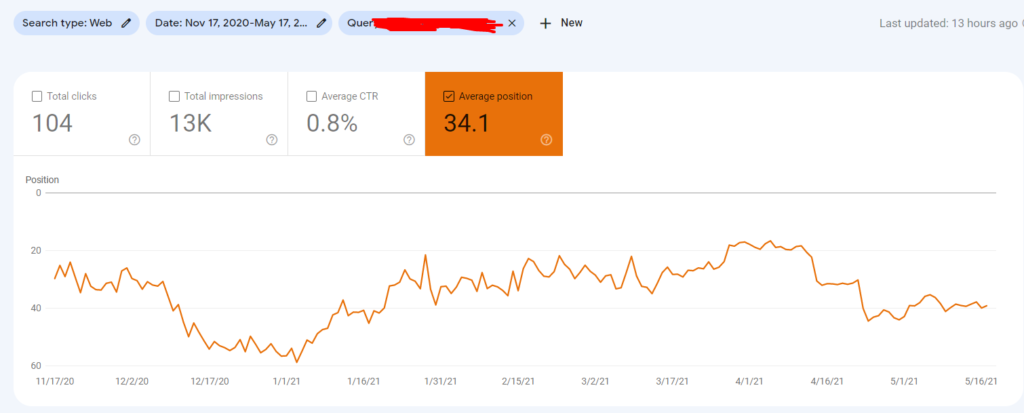Opening the Tricks of CTR Adjustment for Better ROI
The control of click-through prices (CTR) provides an engaging chance for marketers seeking to enhance return on investment (ROI) From A/B testing to data analysis, the approaches for boosting CTR are varied and impactful.
Recognizing Click-Through Rate
In electronic advertising, understanding Click-Through Price (CTR) is necessary for assessing the efficiency of on-line projects. CTR is a key efficiency metric that measures the percentage of users who click a particular link contrasted to the overall variety of customers who check out the web content. GMB CTR Manipulation. It is computed by separating the number of clicks by the variety of impacts, after that multiplying by 100 to express it as a portion
A greater CTR suggests that the web content is engaging and pertinent to the audience, while a reduced CTR might recommend that the content is not reverberating or that the phone call to action is inadequate. CTR works as an indicator of the innovative aspects in advertising, consisting of headings, photos, and overall messaging.
Understanding CTR additionally aids in recognizing fads over time, allowing marketers to fine-tune their methods based upon efficiency information. By analyzing CTR across various networks-- such as email projects, social networks advertisements, and internet search engine results-- marketing experts can gain insights into target market actions and preferences. Ultimately, CTR is a foundational metric that can inform decisions to optimize project performance and improve total roi (ROI)
Importance of CTR in Marketing
How can marketing experts leverage Click-Through Price (CTR) to improve their project efficiency? CTR is a critical metric that quantifies the portion of customers that click a promotion or link compared to the complete number of individuals that see it. A high CTR shows that a project reverberates well with its target audience, successfully capturing their interest and encouraging action.
Understanding the importance of CTR permits online marketers to determine the relevance and charm of their messaging, imaginative assets, and overall approach. Evaluating CTR not just provides understandings into individual involvement however likewise help in recognizing locations for enhancement. Online marketers can utilize CTR data to fine-tune their targeting, guaranteeing that promos get to one of the most suitable target market segments.
Additionally, CTR affects the high quality score in pay-per-click (PPC) advertising, impacting advertisement placement and expense effectiveness. A well-optimized CTR can result in decrease costs per click and boosted return on financial investment (ROI) Inevitably, surveillance and boosting CTR is important for marketing professionals looking for to optimize their campaign performance and attain lasting growth in a competitive landscape. By prioritizing this metric, business can make data-driven decisions that enhance their general advertising technique.
Techniques for CTR Optimization

Another efficient technique is A/B screening, where variants of advertisement duplicates, pictures, or calls-to-action are examined to determine which versions yield higher CTRs. This data-driven method enables organizations to fine-tune their messaging based on real consumer habits.
Making use of distinctive visuals can likewise enhance CTR, as appealing graphics or video clips tend to draw users' interest more properly than text alone (GMB CTR Manipulation). Furthermore, utilizing urgency or shortage strategies-- such as limited-time deals-- can develop a sense of need, engaging customers to act immediately
In addition, enhancing touchdown web pages for mobile phones is vital, as an increasing variety of customers access content with smartphones. A seamless individual experience cultivates engagement and motivates clicks. Leveraging social proof, such as reviews and evaluations, can build Learn More count on and improve the possibility of clicks, inevitably driving much better ROI.
Assessing CTR Information
Comprehending CTR data is vital for marketing professionals aiming to enhance their campaigns and make best use of return on investment. Assessing this data includes scrutinizing click-through rates across numerous channels, advertisement styles, and target demographics. By segmenting CTR data, online marketers can recognize which aspects resonate with target markets and which need optimization.
A comprehensive examination of CTR trends in time can expose patterns that inform future techniques. Seasonal variants might impact involvement, recommending the demand for tailored messaging throughout top durations. Furthermore, contrasting CTR data versus industry standards can help examine project performance, directing adjustments to enhance performance.
Online marketers ought to additionally consider factors affecting CTR, such as ad positioning, copy, and aesthetic components. A/B testing different variations allows a deeper understanding of what drives clicks. Furthermore, integrating CTR information with user habits analytics provides insights into the total client journey, highlighting possibilities for more optimization.
Measuring ROI Effect
Measuring the impact of click-through prices on return on investment (ROI) is important for marketers looking to confirm their methods. By quantifying the connection in between CTR and ROI, companies can identify which projects successfully drive income and optimize their advertising and marketing efforts appropriately.
To start this assessment, one have to develop a clear baseline for ROI, usually determined as the web earnings divided by the total financial investment. As soon as the standard is established, marketing teams can evaluate CTR metrics from different projects, noting how changes in CTR influence overall sales and profits generation.
Advanced analytics devices can even more enhance this procedure by segmenting review data across different channels, audience demographics, and campaign kinds. This granularity allows marketers to pinpoint particular aspects that either positively or adversely impact ROI.
Furthermore, it is necessary to take into consideration the lag impact, where boosted CTR may not immediately translate into greater sales. Tracking efficiency with time can give insights into longer-term effects on ROI.
Ultimately, an extensive understanding of exactly how CTR manipulation changes ROI encourages marketing professionals to refine their methods, making certain optimal appropriation of sources and made the most of monetary returns.
Final Thought
